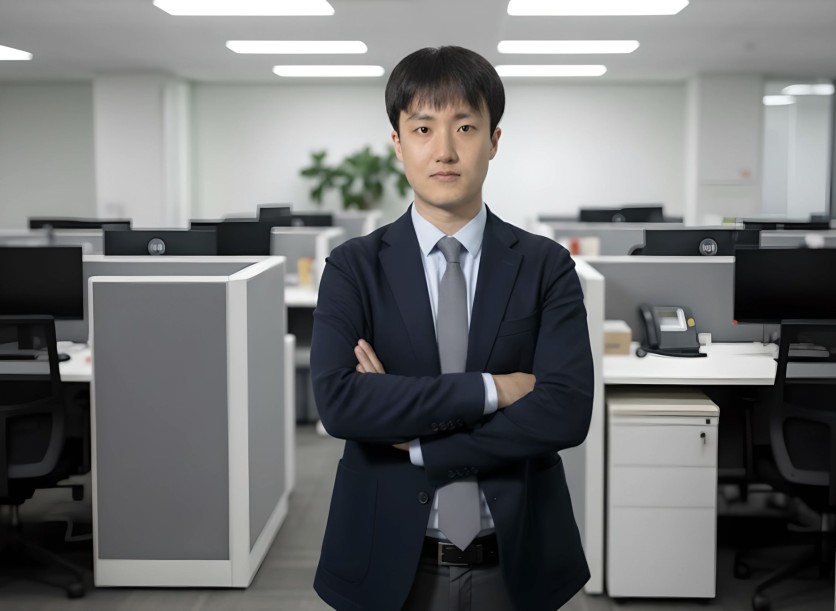
From mental health to education, from sales tech to AI-driven visualization—Hyo Ji Yun has built and scaled startups that turn complex problems into elegant, data-powered solutions. Now, as Co-Founder and CEO of Givance, he's leading the charge to automate data visualization and reporting for global engineering consulting firms, bridging the gap between raw information and strategic insight.
Under his leadership, Givance has developed a breakthrough AI platform capable of transforming raw data into publication-quality visualizations and complete analytical reports within minutes. Built on a proprietary Visual Language Model (VLM) architecture, the platform introduces real-time, AI-driven chart generation and workflow integration designed for engineering and consulting environments—making high-quality visualization and report creation faster, more accessible, and more precise than ever before.
In this interview, Ji Yun shares how Givance is redefining AI-powered reporting, what it takes to build exceptional product teams from the ground up, and why true innovation starts with understanding the people behind the data.
Ji Yun, can you tell us what inspired you to create Givance and how you identified the "white space" in the market for automating data visualization?
The idea came from realizing how much time engineering consultants waste building visualizations. After talking to a manager from Tetra Tech and one of our current ESG consulting clients, it became clear the problem was not just automating data visualization. It was automating the entire report. Engineers spend over 200 hours a year creating and formatting reports instead of doing the real analysis and field work they are paid for. That is the bottleneck. Givance started as a visualization tool and evolved into a platform that turns raw data into complete, publication-quality reports from start to finish.
Givance became the first platform that transforms data and text into publication-quality visualizations via D3.js. How were you able to develop this technology faster than the major AI labs?
It is not only speed. It is direction. We build specifically for the engineering consulting workflow. Big labs like OpenAI and Anthropic ship general features that do 90 percent of the job. When it is time to bill clients, the missing 10 percent of quality and workflow integration makes those tools unusable. Their goal is not to optimize for engineering firms or their daily process. Ours is. We designed Givance around that last 10 percent. Precision, formatting, deterministic D3 output, and deep workflow integration. That is why teams can use us in real production, not just experiments.
You demonstrated GPT-5's errors in visualizations. What business decisions and strategies did you implement based on these observations to turn competitors' technological weaknesses into growth and opportunities for Givance?
We leaned into vertical depth. Our advantage is not just better charts. It is that we are embedded in the native workflow of engineering consulting firms. We generate 80-page reports with 50 or more charts, which general models cannot do reliably. We apply firm templates, branding, and color systems to meet marketing and compliance requirements. The trend is clear. Big labs are going horizontal. Startups like us win by closing the last 10 percent with full vertical integration. That choice positioned Givance as the production layer that turns AI outputs into billable deliverables.
Many founders see themselves more as operational leaders rather than visionaries. What would you say is your personal "superpower" as a product leader?
I am very good at surfacing conflict of interest and seeing what people actually care about beneath polite answers. Most people will tell you what sounds right, not what is true. My strength is finding out who the real decision maker is, what their incentives are, and whether the pain point is strong enough for them to pay for it. For example, in our case, the VPs and SVPs of engineering consulting firms care about cost savings. They currently have no choice but to pay engineers for grunt work like reports. The engineers themselves hate it. They would rather be running experiments and finding insights. My superpower is getting to that truth fast. A lot of startups die because they never uncover what people actually think and why they buy. I do.
Do you have universal product development principles that you apply regardless of the industry?
Yes. I always start by understanding the interests of every stakeholder involved. Some problems that look painful on the surface never get solved because the incentives are misaligned. For example, there are massive mental health issues among teenagers, but schools do not want to pay for solutions because they do not want the liability of outsourcing those problems to startups. The decision makers do not feel the pain that the end users do. I do not build before I find a real pain point where the payer and the user are aligned. When those interests line up, adoption becomes natural.
Behind technological innovations, there are always people. What do you focus on when selecting a team that will create truly breakthrough products?
First of all, my bar for working with people is very high. High agency, fast response time, reliability, technical depth, grit, and resilience are just the baseline. More important is alignment. The team must share the same values, ambitions, and definition of success. We must want to build the same type of company. There is a clear difference between people who want a VC-backable company and those who prefer a lifestyle business. I only work with people whose ambitions match mine.
I also do not work with people who make excuses or fail to communicate when deadlines are missed. That is a red flag. I do not work with people who are slow to respond to client emails or who lack empathy for the client's situation. If you are solving a real problem, you have to understand that the client is often under pressure and emotionally invested in the outcome. There is usually an asymmetry of stress between us and them. It is our job to bridge that gap. If someone is slow, incompetent, or not aligned with that mindset, we are not going to work together.
You have successfully led companies through multiple stages—from idea to investment, accelerator programs, and international competitions. How has your Go-To-Market strategy evolved in recent years, and what advice would you give to founders entering the global market in 2025?
My Go-To-Market approach used to be about education—trying to convince people that they needed the solution. But I learned quickly that if you have to convince someone this is a problem worth paying for, you are already in trouble. That makes the sales cycle long and the conversion rate low. I also relied too heavily on cold outreach and pure value proposition early on. Now I focus on building warm relationships. Warm leads convert 100 times better because there is trust from the start. I build that trust by offering something of value, asking for advice, or finding genuine ways to help before ever pitching. My process now is relationship-first, sales-second, and I always try to get warm introductions to decision makers instead of forcing cold ones.
Do you think AI could one day surpass human designers or editors, and what would this mean for the creative industry? More broadly, do you see any societal risks arising from the development of such technologies?
I do not think this question applies to us directly because we are not targeting the creative industry. We are automating what engineers already do, not replacing creativity. People talk a lot about societal risks, but the trend is inevitable. Every major technological shift has faced the same resistance. When cars were invented, people said they would destroy jobs. When machines came, they said the same. The reality is you can either complain about new technology or learn to use it to advance your career. The ones who adapt will always come out ahead.
ⓒ 2025 TECHTIMES.com All rights reserved. Do not reproduce without permission.




